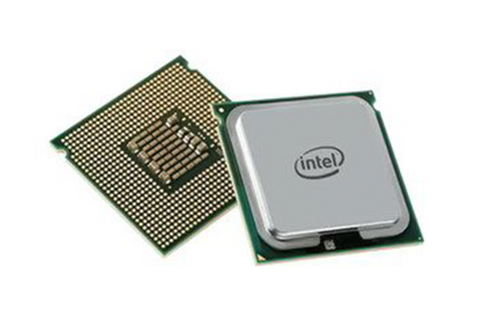Crash Course: CPUs and GPUs

CPUs and GPUs: one letter apart, but oh so different. Central Processing Units (CPUs) and Graphics Processing Units (GPUs) overlap in their ability to process data, but where CPUs provide overall system control and handle a wider range of general computing tasks, GPUs excel in massively parallel tasks. In this blogpost, we’ll go over the basics of CPUs and GPUs and what you can do when you combine them.
Function and ~Core~ Purpose

A CPU acts as the "brain" of a computer, handling general-purpose tasks such as running operating systems, executing software, and managing system resources. It excels in sequential processing, making it ideal for single-threaded applications and general computing tasks.

GPUs, on the other hand, are specialized processors designed for rendering and accelerating graphics-related tasks. They are optimized for parallel processing, making them highly effective in handling large amounts of data simultaneously. GPUs are commonly used in applications like gaming, video editing, 3D modeling, and scientific simulations.
Some CPUs also have GPU cores that enhance the CPU’s capacity for parallel processing and rendering graphics. However, in terms of their functional hierarchy, it’s a one-way street; you can have a CPU without a GPU, but you can’t conventionally utilize a GPU without a CPU.
Architecture and Cores
CPUs typically consist of a few cores (ranging from 2 to 64+), each capable of executing multiple threads. These cores are designed with complex instruction sets and cache hierarchies to maximize single-threaded performance.
What's more important? Processor cores or clock speed?
GPUs feature a larger number of simpler cores (ranging from hundreds to thousands) that work together to process data in parallel. While individual cores are less powerful than CPU cores, their sheer number allows for massively parallel processing capabilities, making GPUs well-suited for tasks that can be divided into smaller, independent operations.
Performance
CPUs excel in tasks that require high single-threaded performance, such as general-purpose computing, web browsing, office applications, and database management. They are also crucial for server tasks like handling multiple virtual machines, file serving, and complex computational workloads that don't benefit significantly from parallel processing.
GPUs, on the other hand, shine in highly parallelizable workloads, including graphics-intensive applications, machine learning, artificial intelligence, scientific calculations, and cryptocurrency mining. These tasks involve processing large datasets and performing repetitive calculations, making GPUs significantly faster compared to CPUs in such scenarios.
Power Consumption
CPUs tend to consume less power compared to GPUs and are often designed to operate within a limited thermal envelope. They are generally easier to cool, making them suitable for systems with limited cooling capabilities like rack servers and compact workstations.
GPUs consume more power due to their parallel processing architecture and require robust cooling solutions. Tower servers and desktop workstations are better equipped to handle the higher power requirements and cooling demands of GPUs.
So what can you do with a GPU?
In most modern computing systems, you can have both a CPU and a GPU working together. In fact, it’s pretty common to find systems that utilize both processors to maximize performance and efficiency. This configuration is commonly referred to as "heterogeneous computing" or "CPU-GPU integration."
Gaming
Adding a GPU when gaming allows for dedicated graphics processing, relieving the CPU of rendering duties and enabling it to focus on game logic, physics, and AI. This synergy results in a seamless gaming experience with lifelike graphics, immersive visuals, and smooth gameplay.
Machine Learning and AI
Integrating a GPU in machine learning and AI tasks empowers the CPU's training and inference algorithms with massive parallel processing power. By leveraging the GPU's capabilities, the training of deep neural networks becomes more efficient, enabling tasks such as image recognition, natural language processing, and data analysis to be performed faster and with improved accuracy.
Scientific Simulations
Incorporating a GPU in scientific simulations and computations complements the CPU's handling of complex calculations and data management. The GPU's parallel processing prowess accelerates the processing of large datasets, leading to faster simulations and enhanced research capabilities in various scientific domains.
3D Modeling/CAD
No surprises here; graphical processing units are incredible for, you guessed it, graphics. Adding a GPU to the 3D modeling/CAD workflow enables accelerated rendering and visualization of intricate 3D models. With the GPU's parallel processing capabilities, it efficiently handles the complex calculations required for generating and manipulating high-resolution graphics. This integration results in real-time visualization, reduced rendering times, and overall improved performance, allowing designers and engineers to work seamlessly with complex models, make adjustments in real-time, and overall just have a much more efficient workflow.
In summary…
CPUs and GPUs are distinct processors with different strengths. CPUs excel in single-threaded performance and general-purpose computing, while GPUs stand out for their parallel processing abilities and specialized focus on graphics-intensive applications. So, basically? For tasks requiring massive parallel processing and high-performance graphics, adding in a GPU is the way to go.
Want to learn more? Need help configuring your server? Don't be shy. Comment below or send your questions to info@techmikeny.com !



